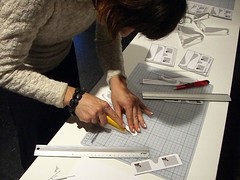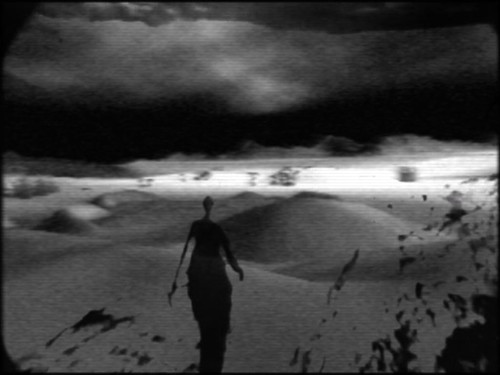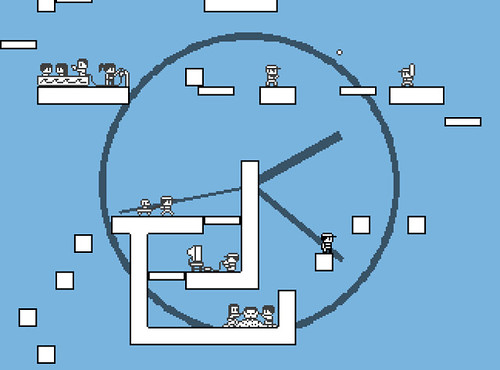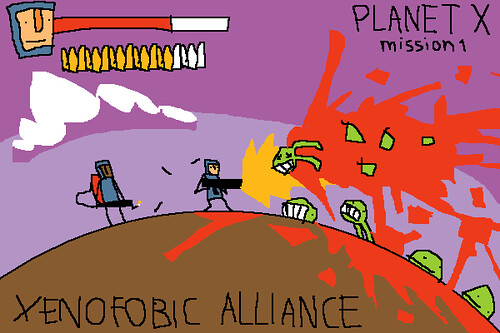Posts from ‘Games and Art?’ Category
Run
By: Paul Eres
On: June 29th, 2012

Run, by Chris Whitman (also known to old-time forum folk as “I Like Cake”), is a game that you can play for free or buy. He describes it as an existential horror farming game. The game cycles between three modes of play.
Reprisal
By: Alehkhs
On: May 21st, 2012
When graphic designer Jon Caplin found himself with time on his hands while recovering from a broken jaw, he began work on a personal art-design project that drew from his memories of playing the classic god game Populous. What began as a simple hobby project arrives today as a full, completed game. Titled “Reprisal,” the finished product features one of the most gorgeous presentations of pixel art I’ve seen and is free to play in-browser.
Dys4ia
By: Paul Eres
On: March 10th, 2012
Dys4ia is a new game by Anna Anthropy / Auntie Pixelante, developer of REDDER, Mighty Jill Off, Calamity Annie, When Pigs Fly, and other games, and who is also just about to release a book on independent game development, Rise of the Videogame Zinesters. Dys4ia is an autobiographical game about transgenderism and hormone therapy. The music is by Liz Ryerson. From Anna’s blog:
“dys4ia is the story of the last six months of my life: when i made the decision to start hormone replacement therapy and began taking estrogen. i wanted to catalog all the frustrations of the experience and maybe create an “it gets better” for other trans women. when i started working on the game, though, i didn’t know whether it did get better. i was in the middle of the shit detailed in level 3 of the game, and at the time i had no idea what the ending would be; it was hard to envision a happy ending.”
Where We Remain
By: Paul Eres
On: May 15th, 2010
Where We Remain was released back in January by TwoFoldSecret. From the image, older readers such as myself will first spot Zelda 1 references — the trees (their shape and color) and the statues, which look like Armos statue edits; even the caves are just black squares. The game is also about non-linear exploration, with saving a girl as the goal given to the player. Some of the items are similar too: a map, a compass, a raft, and so on. Also similar is the idea of lots of abilities for which you have to discover the use for through experimentation.
But the game itself is otherwise distinct; there are multiple endings, and the map is procedurally generated. Instead of enemies that kill you and a life bar of hearts, there is a flower and whirlwind-like monster system, with many of the abilities revolving around avoiding those monsters. There are also notes scattered around, especially in expert mode, which tell the background story of the game in a way that you can take or leave. Read the rest of this entry »
Ceramic Shooter – Electronic Poem
By: Paul Eres
On: April 13th, 2010
Ceramic Shooter – Electronic Poem by Theta games is a sequel to their earlier 2008 game Ceramic Shooter. Although it was released nearly a month ago, when I went to play it it had only been tried by 10 people. Ortoslon’s video playthrough of the game (above) had far more views as the game had plays; Death Worm had about 15000x as many plays. This was kind of surprising to me considering how good this game is.
I suggest neither watching the video or reading the rest of the review under the jump; just play it first. If you want instructions: avoid breaking stuff for the first half of the game (this is hard, because you can’t stop firing). After playing through it, then watch the video, because it shows some things that you probably missed while frantically trying to avoid shooting stuff. I watched the video first, which made me expect the game to be a lot easier than it actually is (it’s an Ortoslon video).
I found the design and music of this game top-notch; the sprites and graphics less so, but this is freeware. I especially liked how the music was in tune with the stuff that you have to avoid.
The concept for the game was also something I’ve been working on and thinking about for a while: an action game that isn’t about shooting everything, but still feels like an action game, with the same intensity. And this was achieved here, through a simple reversal: you have to move quick to avoid shooting things, because you can’t stop shooting. It’s certainly one way to do it. Maybe there are more.
There’s a trade-off in the game: if you stay near the bottom of the screen, you’re less likely to run into things and destroy them with your ship. But you then generate a long string of shots, which will destroy things more often. If you move to the top of the screen, you aren’t very likely to shoot anything at all (since your shots immediately go off screen), but you’re more likely to crash into things as they come into the view. How the player handle’s this trade-off is important; I usually kept myself in the middle of the screen.
The climax of the game comes about halfway in, when you’re finally able to shoot things (and encouraged to), although your real goal is to paint the screen full of color. That point is what makes it feel like a crime to me that this game had only 10 plays (hence this review). I hope to see a lot more from Theta Games.
Space Invaders: Art in the Computer Game Environment
By: Guest Reviewer
On: February 20th, 2010
[This is a guest article by
Thomas Maxwell-Smith. If you’d like to contribute a guest article to TIGSource, go here.]
Space Invaders: Art in the Computer Game Environment is a not-exactly-overdue attempt at moving on the debacle of a debate that is ‘are video games art’ – from whether the two should share a sentence to whether they should share a room.
Situated across the three New Media-focused gallery spaces of Liverpool’s Fact Cinema, the exhibition seeks to “[explore] the increasingly blurred boundaries between videogame spaces and real spacesâ€, and whilst utterly failing to make any sort of coherent comment on such a thing (what game doesn’t “explore spaceâ€), it’s still a pretty fun look at the benefit of experiencing games beyond the comfort of your living room.
Recessed into a slightly gloomy alcove, the exhibition starts with CuteXdoom II, by Anita Fontaine, the sort of deranged nightmare a techno-obsessed, 4-year-old Tim Burton might have imagined. Based on the Unreal Tournament III engine, it features enough malevolent looking teddy bears dripping in day-glo neon to overlook the fact, as a game, it solely amounts to fetching a few tokens and watching the screen collapse into an (admittedly rather cool) green, pixelated mess.
Exhibited as the winning entry in a competition to make a game based around the theme of ‘art’, And Everything Started To Fall, by Alexitron, is an enjoyable, if predictable, extension of the ‘Profound Indie Game’ template. It combines classic old school game mechanics with social and existential commentary – in this case, the journey through life. Urged by time (the rising screen) into an ever-upward ascent of near impossible 2D precision platforming, you start at birth, jumping though school, work and marriage until ultimately death. Different paths through the game represent different choices in life (e.g. skiving off smoking is an easier route than studying) and the character’s movements slow down in old age. While there are some neat ideas, its place in the exhibition merely highlights the generally naïve, gimmicky approach games take towards presenting meaningful messages.
Oddly, the exhibition doesn’t provide information on how any of the games should be played, and while most are simplistic enough to be relatively accessible for the general audience, Onteca’s Monsteca Corral is impenetrable. Even the pleasant lady paid to stand around being pleasant and helpful couldn’t help. According to Onteca’s website it’s an RTS being released on WiiWare later this year. Hopefully they’ll provide instructions.
The largest space of the exhibition is also the most traditionally ‘art’. COSplayers, by Cao Fei, is a video installation that attempts to illuminate the average life of a typical Chinese Cosplayer beyond their presumably hectic fan convention commitments. Cue shots of grown men with enormous green hair, in leather bondage, eating TV dinners with their Mums. Beyond that is a pixelated video of some people doing parkour (Ludic Society’s Real Play) which completely fails to mention Mirror’s Edge or Cananbalt, some photos of Chinese World of Warcraft sweatshops with some fun pop culture economics about their impact on the game (Chinese Gold by Umbermorgen), and an umbrella that makes terrifyingly loud noises whenever you swing it (Amagatana by Yuichiro Katsumoto), although why you would want to swing it is anyone’s guess.

The room also features mainstream games GTA IV and Fracture, presumably because they let you explore a ‘virtual space’, and Counterstrike, because whenever you’re killed or shot in the game an elaborate looking contraption of blood bags will start leaking down the wall (Riley Harmon’s What It Is Without the Hand That Wields It). Finally, there’s a rather adorable make-and-do section from Aram Bartholl called First Person Shooter, where you construct paper glasses with FPS style guns in the lenses, enabling anyone who wishes to psychotically walk down the street shooting people with their imagination. At last!
The final area features a more eclectic selection of games, the least traditional being LevelHead by Julian Oliver. Like Sony’s interactive card game for PlaystationEye, a camera picks up the movements of a cube you control, with each face appearing on the screen as a level. As you tilt the cube the character inside the cube moves accordingly. It’s a pretty basic puzzle game and the technology is about as advanced as the power light on Project Natal, but it’s also one of the most intriguing and accessible games on display.
Perhaps the best game of the exhibition, Night Journey, by Bill Viola (a non-game artist) and the USC EA (!?) Game Innovation Lab, is a supremely creepy affair dripping with unresolved suspense. Wholly immersed thanks to a projection screen the size of a house, you control some… ‘thing’ crawling painfully slow along the floor, the grainy black and white visuals tearing and bleeding into one another as you explore the barren landscape to no apparent end. There’s even a ‘reflect’ button that triggers ominous noises as you pause to look at things sinisterly! God knows what it’s about, but this needs to be an actual game.
The final highlight, from the generally rather awesome Mark Essen (Messhof), is also the sole game to have been specifically commissioned for the event. Far more subdued than his usual games, Malfunction tasks the player with guiding a astronaut through the gravity-free bowels of a spaceship. The twist is that the playthroughs of past attendees aid you throughout your experience and you work with people you’ve never met to try and beat the game. It’s a fascinating example of how games can be stretched and fitted for a gallery situation. Aside from the aimlessly spinning bodies of the former players, it doesn’t appear to be more than a stylish bit of ambient gaming with a few switch-pushing puzzles thrown in.
Elsewhere, ubiquitous thatgamecompany art game staple Flower is bestowed a peacefully secluded projector for a contemplative experience. Colossal Cave Adventure by William Crowther & Don Woods is a classic text adventure which would probably be totally amazing if only the dialogue options didn’t feel as futile as asking hole in the wall about its holidays. Lastly, a video demonstration of the confusing, and sadly unplayable, Video Terraform Dance Party, by Jeremy Bailey: it shows a city-building game that for some reason ends with the burgeoning metropolis going bankrupt, fruitlessly declaring war on its neighbours and celebrating its demise from an imminent atomic bomb by turning purple and dancing to ’There’s No Limit’. Will Wright take note.
The fact that the most successful games of ‘Space Invaders…’ come from a traditional, non-game, artist (Night Journey), have been created especially for exhibition (Malfunction), and don’t feature a 3rd-party Xbox 360 controller (LevelHead) is telling for this and similar events in the future. Rather than placing ordinary or commercial games on a pedestal, developers should be being challenged to utilize the environments and opportunities afforded by galleries. By engaging, exciting, and surprising the audience, games can deliver something unique to a gallery, opening them up to a whole new audience and invigorating an established one. But for exhibitions like this to truly succeed they shouldn’t be trying to justify today’s games as art, they should be trying to inspire tomorrow’s art to be games. Then maybe, that debacle of a debate might really start to be worth having.
Space Invaders: Art in the Computer Game Environment runs at Fact Liverpool until tomorrow.
To Jim Sterling, Who Hates Art Games
By: Derek Yu
On: February 19th, 2010

Ah, art games, the lightning rod of indie gaming… Jim Sterling (pictured above) recently wrote a couple of inflammatory articles about art games. The first one is titled “Indie games don’t have to act like indie games” and the second one is titled “Art games aren’t innovative and innovation isn’t good”. The headlines are clearly sensationalistic, but Jim does a reasonable job expressing a common view about art games: they’re stupid, boring, pretentious, and not very innovative. If you scroll through the comments on Destructoid, you’ll see many a “Hear, hear, Jimbo! Preach it, brotha!” People are sick of art games.
But Jim and others, here are some important points that I think are missing from these articles (after the jump):
1. Art games are a relatively new concept, and like anything new, they are primitive by default.
2. People do genuinely enjoy these games, and find meaning in them. Even if a player is simply filling in what’s intentionally vague or abstract about the game, that’s valuable. By analogy, there’s value in a cup or a bowl.
3. Jim, you tore apart Edmund and The Marriage, calling them “boring”, “horrible”, and “intellectually lazy”. These are free games made as experiments, as prototypes – the video game equivalents of doodles or sketches, and just as necessary to making games as to making paintings. You railed on two little experimental games for half a dozen paragraphs, and failed to mention that Edmund’s creator, Paul Greasley, also made Zompocalpyse and The Marriage’s creator, Rod Humble, is the executive producer for The Sims (the lazy bastard)!
4. Your argument is the same argument people have used for centuries against artists trying to do new things. Here is what art critic Louis Leroy wrote of one of Claude Monet’s paintings around the dawn of Impressionism (1874):
“A preliminary drawing for a wallpaper pattern is more finished than this seascape.”

Does that sound familiar? He thought it was lazy, sloppy, and unfinished. In fact, it was the start of something entirely new – something that many people couldn’t imagine living without today. (By the way, there are a lot of other parallels between Impressionism and many of these new experimental game movements.)
I actually agree with some of the things you’re saying, like how AAA mainstream games can be innovative, and how games can be artistic without being unfun or pretentious. But with the attitude you took in your articles (fuck this, fuck that, sarcasm), you may be remembered as the Louis Leroy of this generation+. Food for thought.
Art games will always have a place here on the TIGSource front page, and I will never ever tell people to stop making them.
+ (Although, to be fair to Louis, he at least coined the term “Impressionism”.)
Strangers
By: fuzz
On: February 2nd, 2010
Strangers, by Jan Willem Nijman (a.k.a. Jwaap or JW) and Jonathan Barbosa Dijkstra, is a short platformer set in a traditional sci-fi world. Jan Willem excels graphically here, as always, but what really makes this worth the download is the story, which has an interesting twist that you may or may not see coming. Gameplay-wise, it’s fairly standard platforming fare with movement that feels great, due in part to its FPS style controls. The jagged edges and interweaving colors of the art resemble a bizarre watercolour, and this effect is enhanced by the unintentionally blurry fullscreen mode. Each setpiece and character is made up of a number of large boxes, which creates a fascinating visual effect that plays on our tendency to gravitate to geometric shapes. There’s no music in-game, but according to the topic in which it was announced, this song is intended to be listened to during play, which is quite suitable to the overall style of Strangers. In the game, the unnamed main character is accompanied by his dog, Columbus, and he encounters quite a few slimy, one-eyed monsters in his exploration of a rather small alien planet. To say more would give away the best part, but once you’re done playing, hit the jump for my thoughts on it.
Again, you can download Strangers here.
Strangers is one of a rare few games that implement moral choices in a meaningful way. Sure, you have games ranging from Fable to Infamous touting their merits as a representation of life and the difficult decisions that must be made in it, but nothing I’ve heard of so far has ever gone beyond bland and obvious story-based choices. Jwaap has mentioned several times how game designers should not be playing games, and this exemplifies that notion: because he tries to approach his games from an outsider perspective, he’s able to criticize their established tropes, and in the end create a more gameplay-based storytelling formula.
I saw the twist coming from the beginning. When I realized that the aliens weren’t shooting at me, I tried walking through them, expecting them to hurt me. They didn’t, which is when I realized that while I was playing the game, the reverse was also true. The “kill or be killed” motif present in so many games is here removed, but since it’s packaged in all the trappings of a traditional 2D platformer, there’s no expectation or curiosity on the player’s part that this might not be the case. At first, I thought it a fault that only one ending is present, no matter whether you shoot the alien’s children or not, but it appears that his reaction can act literally as well as euphemistically; perhaps his children are playing hide-and-seek when you choose not to brutally murder them. This versatility of meaning works towards the game’s advantage in that it allows Strangers to act as vignette rather than anything more. Jan Willem has made several “art games” before this one, but this seems to be one of his first non-parody ones, and it’s all the more effective for it.
Here’s JW’s initial mockup for the game, if you’re into that sort of thing; also check out his article on proper violence in games.
game mod
By: Derek Yu
On: September 24th, 2009
This caught my eye. It’s an old workshop (2007) led by Steph Thirion, who created the iPhone game Eliss. In the workshop, Steph gave students the source code for a simple Breakout game (made with Processing) and had them modify the code to create something new. Most of the students were graphic design majors and not game developers, but they managed to make some cool mods during the workshop.
Now, when you edit animated shapes into a music video, of course they look great, especially if Steph Thirion is the editor. Also, this isn’t really a new concept, considering mods, hacks, and open source have been around since the dawn of games. Still, it’s an interesting idea to create a game that’s made made specifically to be deconstructed and reconstructed like so…
The source is Marie Foulston, via Tigers Hungry.
Attract Mode Shop Opens
By: Brandon McCartin (BMcC)
On: September 16th, 2009

In case anyone’s wondering what to get me for Christmas, Adam Robezzoli’s Attract Mode videogame culture shop has at long last opened its doors. (You may know Adam from the equally excellent ARTXGAME/Giant Robot shows.)
Currently featured are some excellent shirts, a number of chiptune records, Tetris ice cube trays (!), some super cool pins from the likes of Auntie Pixelante and Cactus, as well as gigantic prints from Mr. Craig D. “”http://www.superbrothers.ca/" title="s u p e r b r o t h e r s “>superbrothers” Adams. (Who you should check out if you haven’t — he’s great!) Tell your moms friends!
If you missed the link: You can find the Attract Mode shop here.




